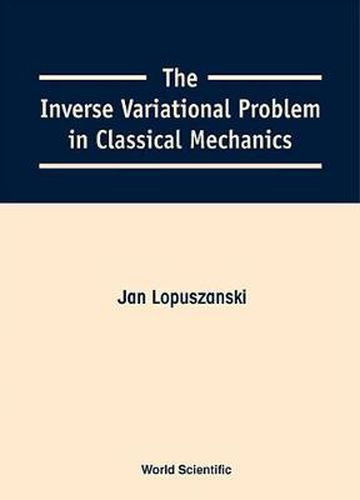Readings Newsletter
Become a Readings Member to make your shopping experience even easier.
Sign in or sign up for free!
You’re not far away from qualifying for FREE standard shipping within Australia
You’ve qualified for FREE standard shipping within Australia
The cart is loading…






A concise description of the status of a fascinating scientific problem - the inverse variational problem in classical mechanics. The essence of this problem is as follows: one is given a set of equations of motion describing a certain classical mechanical system, and the question to be answered is: do these equations of motion correspond to some Lagrange function as its Euler-Lagrange equations? In general, not for every system of equations of motions does a Lagrange function exist; it can, however, happen that one may modify the given equations of motion in such a way that they yield the same set of solutions as the original ones and they correspond already to a Lagrange function. Moreover, there can even be infinitely many such Lagrange functions, the relations among which are not trivial. The book deals with this scope of problems. No advanced mathematical methods, such as contemporary differential geometry are used. The intention is to meet the standard educational level of a broad group of physicists and mathematicians.
$9.00 standard shipping within Australia
FREE standard shipping within Australia for orders over $100.00
Express & International shipping calculated at checkout
A concise description of the status of a fascinating scientific problem - the inverse variational problem in classical mechanics. The essence of this problem is as follows: one is given a set of equations of motion describing a certain classical mechanical system, and the question to be answered is: do these equations of motion correspond to some Lagrange function as its Euler-Lagrange equations? In general, not for every system of equations of motions does a Lagrange function exist; it can, however, happen that one may modify the given equations of motion in such a way that they yield the same set of solutions as the original ones and they correspond already to a Lagrange function. Moreover, there can even be infinitely many such Lagrange functions, the relations among which are not trivial. The book deals with this scope of problems. No advanced mathematical methods, such as contemporary differential geometry are used. The intention is to meet the standard educational level of a broad group of physicists and mathematicians.